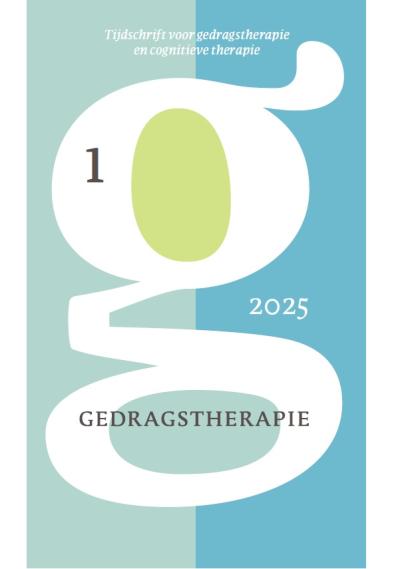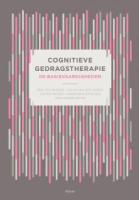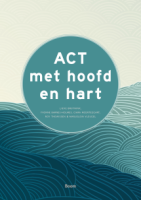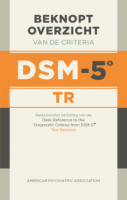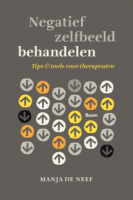Inhoud
Lust als last. De cognitief gedragstherapeutische behandeling
Samenvatting
Dit artikel beschrijft het eerste half jaar van een individuele cognitieve gedragstherapie van een zedendelinquent in een klinische setting. De what works principes waren daarin leidend met de focus op het behoefte- en responsiviteitsprincipe. Door een structuurbiedende en positieve, empathisch steunende behandelrelatie is de patiënt erin geslaagd van de cognitief gedragtherapeutische interventies te profiteren. Inhoudelijk stonden het versterken van de zelfregulatie en het opbouwen van een prosociale levensstijl als behandeldoelen voorop.
Literatuur
- Andrews, D.A., & Bonta, J. (2006). The psychology of criminal conduct (4th ed), Newark, NJ: LexisNexis.
- Beek, D.J. van, Doncker, D. de., & Ruiter, C. De. (2001). STATIC-99: inschatting van seksueel gewelddadige recidive bij volwassen seksuele delinquenten. Coderingsregels bij de Static-99 (Vertaling van oorspronkelijke uitgave van A. Phenix, R.K. Hanson, & D.Thornton). Utrecht: Forum Educatief
- Beek, D.J. van, & Mulder, J. (2007). Het zelfregulatiemodel. Handleiding, Deel 1: Diagnostiek, Utrecht: Forum Educatief.
- Bumby, K.M. (1996). Assessing the cognitive distortions of child molesters and rapists: development and validation of the MOLEST and RAPE Scales. Sexual Abuse: a Journal of Research and Treatment, 8, 37-54.
- Buss, A.H., & Durkee,G. (1957).An inventory of assessing different kinds of hostility. Journal of Consulting psychology, 26, 84-89.
- Hanson, R.K., & Harris, A.J.R. (2001). A structured approach to evaluating change among sexual offenders. Sexual Abuse: a Journal of research anbd treatment, 13, 105-122.
- Hanson, R.K., Morton, K.E., & Harris, A.J.R. (2003). Sexual offender recidivism risk: What we know and what we need to know. In R.A. Prentky, E.S. Janus, & M.C. Seto (Eds), Sexually Coercive Behavior: Understanding and Management (154-166). New York: The New York Academy of Sciences.
- Hanson, K., Bourgon, G., Helmus, L., & Hodgson, S. (2009). A meta-analysis of the effectiveness of treatment for sexual offenders: Risk, Need and responsivity. Canada: Public Safety.
- Hildebrand, M., Ruiter, C. de., & Beek, D.J. van, (2000). Handleiding bij de Sexual Violence Risk-20 (Vertaling van oorspronkelijke uitgave van D.P.Boer, S.D.Hart, P.R. Kropp & C.D. Webster). Utrecht: Forum educatief.
- Knight, R.A., & Prentky, R.A. (1990). Classifying sexual offenders; the development and corroboration of taxonomic models. In: Marshall,W.L.& Laws,D.R.& Barbaree,H.E.(Eds.). Handbook of sexual assault: issues, theories, and treatment of the offender (pp. 23-52) New York: Plenum Press.
- Korrelboom, K., & Broeke, E. ten (2008). Geïntegreerde cognitieve gedragstherapie. Handboek voor theorie en praktijk. Bussum: Uitgeverij Coutinho.
- Mann, R.E., Hanson, R.K., & Thorton, D. (2010). Assessing risk for sexual recidivism: Some Proposals on the nature of psychologically meaningful risk factors. Sexual Abuse: A Journal of Research and Treatment, 22, 191-217.
- Marshall, W.L., & Barbaree, H.E. (1990). An integrated theory of the etiology of sexual offending, in: W.L. Marshall, D.R. Laws & H.E. Barbaree (Eds), Handbook of sexual assault: issues, theories, and treatment of the offender (pp. 257-275). New York: Plenum Press.
- Olver, M.E., Wong, S.C.P., & Nicholaichuk, T.P. (2009). Outcome evaluation of a high intensity inpatient sex offender treatment program. Journal of Interpersonal Violence, 24, 522-536.
- Seto, M.C. (2008). Pedophilia and sexual offending against children; Theory, Assessment, and intervention. Washington: American Psychological Association.
- Smid, W., Beek, D.J., & Doncker, D. de (2009). Plegers van seksueel geweld, in: Gijs, L., W. Gianotten, I. Vanwesenbeek en P. Weijenborg (Red). Seksuologie (pp. 437-463) Houten: Bohn, Stafleu Van Loghum
- Ward, T., & Hudson,S.M. (1998). A model of the relapse process in sexual offenders. Journal of Interpersonal Violence, 13, 700-725.
- Ward,T. (2000). Sexual offenders' cognitive distortions as implicit theories. Aggression and violent Behavior 5, 491-507.
- Ward, T., & Maruna, S. (2007). Rehabilitation, beyond the risk paradigm. London and New York: Routledge.
- Ware, J., & Mann, R.E. (in press). How should "acceptance of responsibility" be addressed in sexual Offending treatment programs? Aggression and Violent Behavior.
 © 2009-2025 Uitgeverij Boom Amsterdam
© 2009-2025 Uitgeverij Boom Amsterdam
De artikelen uit de (online)tijdschriften van Uitgeverij Boom zijn auteursrechtelijk beschermd. U kunt er natuurlijk uit citeren (voorzien van een bronvermelding) maar voor reproductie in welke vorm dan ook moet toestemming aan de uitgever worden gevraagd:
Behoudens de in of krachtens de Auteurswet van 1912 gestelde uitzonderingen mag niets uit deze uitgave worden verveelvoudigd, opgeslagen in een geautomatiseerd gegevensbestand, of openbaar gemaakt, in enige vorm of op enige wijze, hetzij elektronisch, mechanisch door fotokopieën, opnamen of enig andere manier, zonder voorafgaande schriftelijke toestemming van de uitgever.
Voor zover het maken van kopieën uit deze uitgave is toegestaan op grond van artikelen 16h t/m 16m Auteurswet 1912 jo. Besluit van 27 november 2002, Stb 575, dient men de daarvoor wettelijk verschuldigde vergoeding te voldoen aan de Stichting Reprorecht te Hoofddorp (postbus 3060, 2130 KB, www.reprorecht.nl) of contact op te nemen met de uitgever voor het treffen van een rechtstreekse regeling in de zin van art. 16l, vijfde lid, Auteurswet 1912.
Voor het overnemen van gedeelte(n) uit deze uitgave in bloemlezingen, readers en andere compilatiewerken (artikel 16, Auteurswet 1912) kan men zich wenden tot de Stichting PRO (Stichting Publicatie- en Reproductierechten, postbus 3060, 2130 KB Hoofddorp, www.cedar.nl/pro).
No part of this book may be reproduced in any way whatsoever without the written permission of the publisher.
Inloggen VGCt en VVGT
Leden van de VGCt en de VVGT loggen in via de site van hun vereniging. Als u op die site bent ingelogd als lid, vindt u daar een button naar het Tijdschrift voor Gedragstherapie.
English
Behavioral Therapy: Journal for Behavioral Therapy and Cognitive Therapy ISSN 0167-7454
Information in English can be found here.



